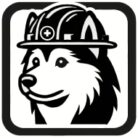Coming Soon: Expanded Safety Resources!
We’re currently updating this page to provide you with even more valuable safety information and resources. Check back soon for new content!
Asbestos is a naturally occurring mineral once widely used in construction and industrial materials for its heat resistance and durability. However, when asbestos-containing materials are disturbed, they release tiny fibers into the air that can be inhaled or ingested, posing serious health risks. Exposure to asbestos can lead to life-threatening illnesses such as asbestosis, lung cancer, and mesothelioma.
To protect workers, strict regulations are in place in British Columbia under WorkSafeBC’s Occupational Health and Safety (OHS) guidelines. These regulations focus on identifying, handling, and safely removing asbestos in workplaces. Employers must ensure proper training, use of protective equipment, and adherence to control measures to minimize exposure risks and maintain a safe environment.
Carbon monoxide (CO) is a colorless, odorless gas produced by burning fuels such as gas, oil, or wood. High exposure can lead to poisoning, causing symptoms like headaches, dizziness, or even death. To stay safe, ensure proper ventilation, use CO detectors, and follow WorkSafeBC guidelines to prevent exposure in the workplace.
Ensuring crane safety is critical to preventing workplace accidents and equipment damage. Operators must be properly trained, conduct pre-operation inspections, and adhere to load capacity limits. Environmental factors like wind speed and ground stability should always be assessed before lifting. Clear communication between operators and ground workers is essential, using standardized hand signals or radios. Regular maintenance and strict adherence to safety protocols help minimize risks and ensure a safe working environment.
Hot work refers to tasks that involve open flames, sparks, or high heat, which can ignite nearby flammable materials. Examples include welding, cutting, grinding, soldering, and torch-applied roofing. In British Columbia, hot work must comply with WorkSafeBC’s Occupational Health and Safety (OHS) Regulation to prevent fires, explosions, and injuries.
